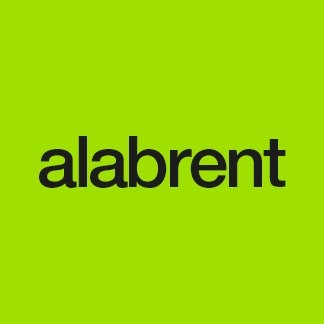Redacción Alabrent
The non-food field differentiates between liquid products and those that retain their shape. The former, e.g. liquid hand soaps, household chemicals and detergents, must be packaged in sturdy material with special containment properties. As a rule, these products are consumed over long periods, so it is important that their packaging also offers convenience features. These often take the form of nozzles and metering aids for ease of use or zips and snap fasteners for preserving the product’s properties for later use.Sturdy packaging material is also needed for shape-retaining non-foods, like crayons, screws and batteries, as well as powdered commodities like fillers and detergents. Most of these commodities are transferred to bags, folding or lidded boxes, blister packs, thermoformed trays or bottles before they are shipped to retailers in their sturdy outer packaging. In addition, they can be bundled and banded with the minimum of material. interpack exhibitor Bandall has recently launched a modular, fully automated bundling machine as part of its completely revised series of fully automated solutions. It has been designed specifically for industrial pre- and co-packaging applications. The bundled products are then banded, which the company claims saves up to 80% of the material otherwise used for shrink-wrapping. For even greater flexibility, the system can be combined with a printer that letters the banding while it is being applied.
Practical clip-closure packaging
Clip closures are not only suitable for food. Although originally conceived by the provider Poly-clip System for the meat-processing industry, they have now entered the non-food segments, e.g. for sealants, adhesives and convenience products. The clip-closure solution clip-pak consists of a tubular bag sealed at both ends with a clip closure, making it an appealing solution for a great many sectors outside of the food industry, including chemicals, pharmaceuticals, animal feed and hygiene products – that is, for nearly all liquid to highly viscous contents. With respect to sealants and adhesives, for instance, the clip-pak system can serve as an alternative to the cartridge. The company has also developed a new, fully automated sealer/clipper that can apply a flexible range of product labels in two colours, e.g. as hazard warnings. The machine converts rolls of flat film into securely sealed tubular bags ready for filling. This is intended to save over 90% of the packaging material otherwise used for disposable cartridges, and cut packaging costs by about 30%.
Non-foods that require particular protection or containment against gases and moisture can benefit from vacuum bags like those offered by interpack exhibitor Allfo. Electronic and machine componentry and bulk goods are then protected against external effects in the form of moisture or soiling. For instance, bolts, nuts, granulates and other small and micro parts may not be exposed to moisture, which could corrode or clump them. Excessive friction during transport can also damage sensitive products. This is eliminated by vacuum bags, which keep a reliably tight hold even on bulk contents. Made of a PA/PE composite, they can be applied on conventional chamber machines and are resistant to penetration, even for pointed and sharp-edged products.
Less-sensitive non-foods like toys, cosmetics, spare parts and tools can now be packaged safely in bags of a new paper developed by Mitsubishi HiTec Paper. This 75 g paper made of virgin fibre exhibits excellent hot sealing properties, constituting a sustainable alternative to conventional plastic and composite film packaging. FSC and PEFC-certified, the new paper has already been tested successfully on packaging machines from leading manufacturers and lends itself to offset and flexographic printing.
Returnable solutions for non-food
For the safe, yet sustainable transport of sensitive machine and electronic componentry, artwork and fragile goods, the Fraunhofer Institute for Structural Durability and System Reliability (LBF) et al have developed and patented a returnable transport solution with 100% recyclability. This is to provide an alternative to disposable transport padding and fillers still encountered today in the form of plastic flakes, bubble wrap, corrugated cardboard and wood wool.
At present, these fillers are unsuitable for cost-effective recycling. The new returnable box contains an inflatable/deflatable air cushion that wraps itself around the contents for a high level of transport protection. This cushion and the box are made of the same material. The result is a monomaterial system that can be recycled easily. The air cushion not only serves as transport protection, but can also be provided e.g. with an electrically conducting finish for custom applications. After deflation, the transport system can be folded compactly, minimising its volume for storage and empty returns.
The plant trading segments also offer new returnable solutions for enhanced sustainability in the transport of non-foods. Each year sees millions of disposable pallets transported from the producer to the retailer before ending up as waste plastic. Yet this sector too can look into a future under the increasing influence of returnable solutions. A number of providers are already supplying DIY stores and garden centres with primroses, pansies, etc. on reusable plastic pallets.
Adhesives are also subject to energy- and resource-saving considerations. In this context, Baumer hhs develops solutions for the final packaging of non-foods, including biobased adhesives and low-temperature hotmelts. Adhesives can also serve in lieu of shrink-wrap to secure products on pallets. In this case, the adhesive is sprayed on the transport packaging, which then secures all underlying layers firmly to the pallets.
Palletising chemical products
Catering to the chemicals and petrochemicals industry, the Beumer Group offers a form-fill-sealer that can mould and charge up to 2,800 sacks an hour from prefabricated tubular PE film. The company provides a range of palletising solutions tailored to the packaging type, e.g. a high-performance layer palletiser for bagged bulk. Depending on the product handled, it can be fitted with a rotary clamp or twin belt that positions the bags quickly and reliably. Beumer has revised this palletiser series completely. The new modular design now means that all systems are fitted with identical or near identical components and subassemblies. Stacked to precision on pallets, the packages can now be wrapped in high-performance stretch hood film on a downstream installation. Consisting of 30% recyclate, this film also contributes to the preservation of resources.
Recycled polystyrene in packaging
Owing to its ideal properties, expanded polystyrene (EPS) is used often as protective packaging for domestic appliances and electronic products. Whereas larger moulded sections, e.g. for furniture or refrigerators, are often taken back after delivery to be disposed of by the suppliers, smaller pieces of protective EPS remain with the consumer. Although these usually end up at the collecting points, they bypass the sorting stream despite their high recyclability. According to the sorting plant operators, they are unsuitable for economic recycling. This issue has been targeted by a project of IK Industrievereinigung Kunststoffverpackungen e.V. in collaboration with EPS manufacturers. The pilot project investigates the ecological and economic feasibility of separating polystyrene from collected domestic waste. Thanks to the combined efforts of sorting plant operators for lightweight packaging, EPS can now be captured and separated reliably by means of infrared technology. EPS manufacturers can then convert this into recycled EPS (rEPS).
Exhibitors will be demonstrating their packaging of non-foods at interpack in Düsseldorf on 4–10 May 2023. The world’s leading trade fair for processing & packaging offers visitors solutions in Halls 5, 6, and 11–14. Further information on interpack is available at www.interpack.com



